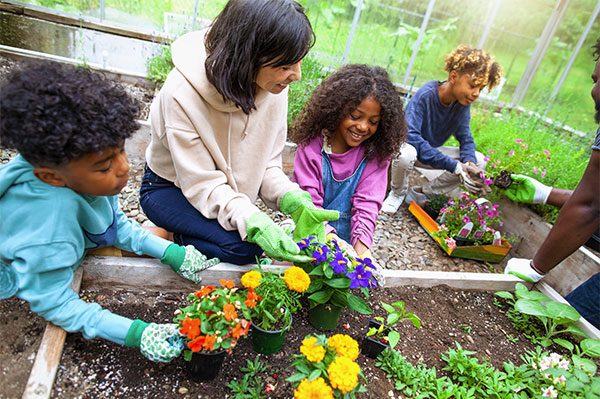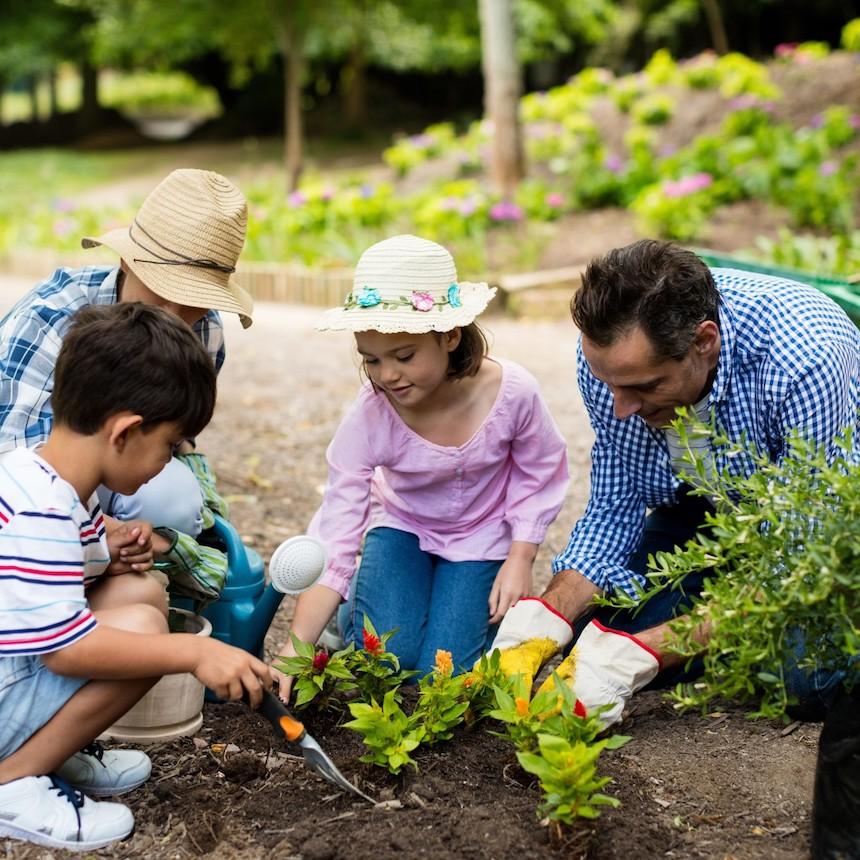Master the Art of Container Gardening with Expert Gardening Tips
Master the Art of Container Gardening with Expert Gardening Tips
Blog Article
Simple Gardening Tips to Change Your Yard Into a Lush Paradise
Changing your yard into a lush paradise includes a critical approach, beginning with examining your space to comprehend sunshine patterns and dirt top quality. Selecting plants that flourish in your regional environment is essential, as is enhancing soil with raw material and efficient watering methods. Enhancing aesthetic allure with a mix of vibrant flowers, greenery, and architectural components like paths and seating areas can raise your garden's appeal. These preliminary actions are simply the start-- find just how to more improve your horticulture strategies to develop a vivid, welcoming sanctuary that will certainly become the envy of your neighborhood.
Assess Your Area
Analyzing your space is a crucial very first step in producing an effective backyard yard. This first examination will lead all subsequent choices, ensuring that your yard is both functional and lovely.
Identify zones that obtain complete sun, partial shade, and complete color, as different plants have varying light demands. Performing a soil test can supply important details on pH degrees and nutrient content, enabling you to make needed modifications for optimum plant growth.
Drainage is another important variable - gardening tips. Poor drainage can cause waterlogged soil, damaging to a lot of plants. Look for areas where water tends to pool after rain and consider executing services like increased beds or French drains
Lastly, assess the microclimates within your yard. Factors such as wind direct exposure, closeness to structures, and altitude adjustments can produce special growing conditions. Understanding these subtleties will help you make informed choices, establishing the phase for a prospering yard garden.
Choose the Right Plant Kingdoms
Picking the proper plants for your yard garden is fundamental to attaining a well balanced and lively landscape. To start, take into consideration the neighborhood environment and hardiness zone, as these variables figure out which plants will certainly grow in your atmosphere. For instance, hardy perennials such as lavender and coneflowers are optimal for cooler climates, while tropical plants like hibiscus and bougainvillea match warmer regions.
Next, analyze the amount of sunlight your garden obtains. Plants have varying light requirements; some flourish completely sun, while others favor partial shade or complete shade. Sun-loving plants like tomatoes and sunflowers require a minimum of six hours of straight sunlight daily, whereas hostas and brushes succeed in shaded locations.
Furthermore, consider the dirt enter your garden. Some plants prefer well-drained sandy soils, while others grow in clay or loamy problems. Native plants are usually a smart selection, as they are naturally adjusted to the regional dirt and climate, needing much less maintenance.

Maximize Dirt Quality
Enhancing soil quality is the next crucial step to ensure your chosen plants flourish. The foundation of any kind of growing yard is nutrient-rich dirt. Carrying out a soil test is critical; it offers insights right into pH degrees and nutrient shortages, enabling you to tailor amendments specifically to your yard's requirements. Evaluating kits are very easy and commonly offered to use, or you can enlist specialist solutions for more detailed evaluation.
Including raw material, such as garden compost or well-rotted manure, can considerably enhance dirt structure and fertility. Organic issue improves oygenation, water retention, and microbial activity, which are all crucial for healthy and balanced plant growth. Goal to add a 2-3 inch layer of raw material to your dirt annually, blending it well to incorporate with the existing soil.
In addition, think about the appearance of your soil-- whether it is sandy, clay, or fertile. Each type has distinctive qualities that influence water drainage and nutrient accessibility. Modifying sandy soils with natural matter can enhance its water-holding ability, while incorporating gypsum right into clay soils can enhance water drainage and decrease compaction.
Implement Watering Methods
Exactly how important is a well-planned watering strategy to the success of your yard garden? Basically, it is the lifeline that maintains plant health and promotes growth. Correct watering makes sure that plants obtain the right amount of wetness, protecting against both under- and over-watering, which can result in wilting or origin rot.
First, take into consideration the specific requirements of your plants. Various varieties have differing water requirements. Succulents and cacti flourish in dry conditions, whereas ferns and hydrangeas like even more wetness. Customizing your watering timetable to fulfill these demands is essential.
Second of all, timing is crucial. Watering in the morning or late mid-day lessens dissipation and permits plants to soak up dampness successfully. This technique preserves water and sustains much healthier origin systems.
Furthermore, utilizing efficient watering techniques such as drip watering or soaker tubes can maximize water use. These techniques deliver water directly to the roots, reducing wastefulness and advertising much deeper root growth.
Last but not least, think about mulching. Applying a layer of compost around plants assists retain dirt wetness and decreases the need for constant watering. By executing these strategies, you can guarantee your backyard yard stays resilient and vivid, even during periods of dry spell.
Incorporate Garden Functions
Incorporating yard features can dramatically improve both the visual appeal and capability of your backyard yard. Thoughtfully chosen features such as paths, water elements, and yard frameworks can produce an unified and inviting atmosphere. Paths, built from products like wood, stone, or crushed rock, not just guide about his visitors via the garden however additionally avoid dirt compaction and protect plant roots.
Water attributes, such as water fountains, ponds, or little waterfalls, present a soothing auditory aspect while sustaining local wildlife like birds and helpful insects. The sound of flowing water check my site can likewise lower the perception of noise contamination, developing a serene atmosphere.
Garden structures, consisting of pergolas, arbors, and trellises, offer both vertical rate of interest and functional assistance for climbing plants. These aspects can also offer shaded areas for relaxation and social events. In addition, including seating locations and attractive components like statuaries or yard art can individualize the room, making it a real representation of your design.
Verdict
To conclude, changing a yard right into a rich paradise includes a complete evaluation of the offered area, careful selection of plants suited to local environment conditions, and optimization of soil high quality through organic enrichment. Applying effective sprinkling strategies ensures sustained plant health, while incorporating structural aspects such as pathways and seating areas boosts aesthetic appeal and capability. These actions collectively add to the development of a dynamic, inviting garden area that thrills the detects.

In final thought, changing a yard right into a lavish heaven involves an extensive analysis of the offered space, cautious choice of plants fit to neighborhood environment problems, and optimization of dirt top quality via organic enrichment.
Report this page